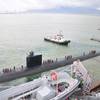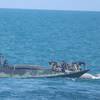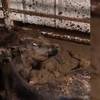Arctic Ocean is facing a dilemma today and that is acidification. Ocean acidification is a result or a chemical reaction which happens when seawater absorbs too much carbon dioxide from the atmosphere—reducing its acidity, carbon ion concentration and saturation.
The Arctic marine species stand endangered amidst the alarming rise in ocean acidification. A new research by the NOAA's Pacific Marine Environmental Laboratory claims the disastrous effects of the drastically rising acidity levels of Arctic Ocean on the marine species.
The research has revealed that the surface waters of three seas under study, could reach such levels of acidity that would threaten the ability of animals to build and maintain their shells, with the Beaufort Sea reaching this level of acidity by 2025, Chukchi by 2027 while the Bering Sea a little later, by 2044.
It's no secret that ocean acidification as a result of climate change is causing calcifiers like mollusks, starfish and corals to struggle. But now new research says that surface waters of the Chukchi and Beaufort seas, in particular, could reach levels of acidity that threaten the ability of animals to build and maintain their shells by 2030, with the Bering Sea reaching this level of acidity by 2044.
“Our research shows that within 15 years, the chemistry of these waters may no longer be saturated with enough calcium carbonate for a number of animals from tiny sea snails to Alaska King crabs to construct and maintain their shells at certain times of the year,” explained Jeremy Mathis, a NOAA oceanographer.
The research team, led by Mathis and Jessica Cross from the University of Alaska Fairbanks, went on a two-month Arctic expedition to collect data on dissolved carbon, water temperature level, and salinity. Using these scientific data, they validated a predictive model for the Arctic region concerning possible ocean acidification in the very near future.












